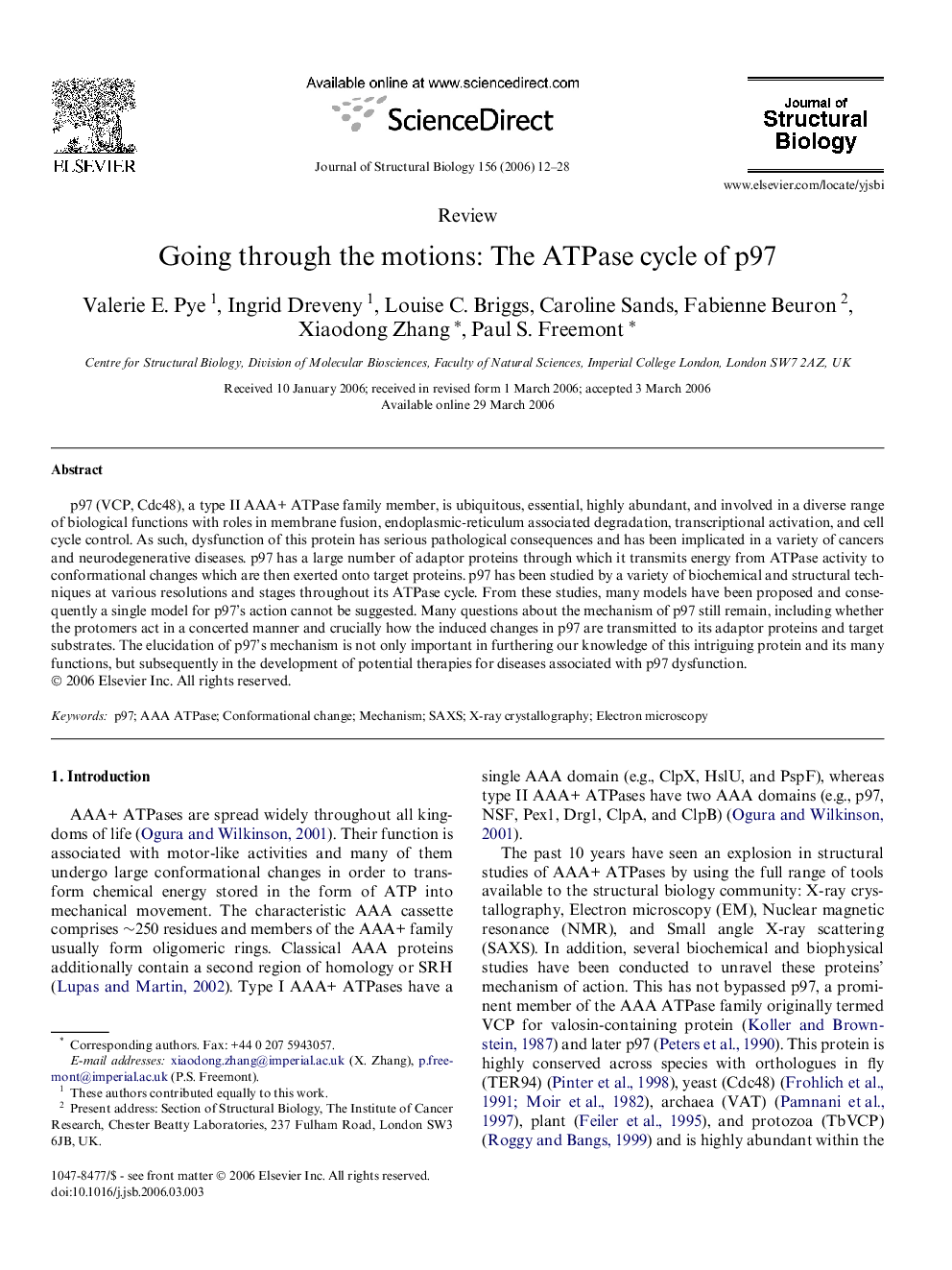| Article ID | Journal | Published Year | Pages | File Type |
|---|---|---|---|---|
| 2829346 | Journal of Structural Biology | 2006 | 17 Pages |
p97 (VCP, Cdc48), a type II AAA+ ATPase family member, is ubiquitous, essential, highly abundant, and involved in a diverse range of biological functions with roles in membrane fusion, endoplasmic-reticulum associated degradation, transcriptional activation, and cell cycle control. As such, dysfunction of this protein has serious pathological consequences and has been implicated in a variety of cancers and neurodegenerative diseases. p97 has a large number of adaptor proteins through which it transmits energy from ATPase activity to conformational changes which are then exerted onto target proteins. p97 has been studied by a variety of biochemical and structural techniques at various resolutions and stages throughout its ATPase cycle. From these studies, many models have been proposed and consequently a single model for p97’s action cannot be suggested. Many questions about the mechanism of p97 still remain, including whether the protomers act in a concerted manner and crucially how the induced changes in p97 are transmitted to its adaptor proteins and target substrates. The elucidation of p97’s mechanism is not only important in furthering our knowledge of this intriguing protein and its many functions, but subsequently in the development of potential therapies for diseases associated with p97 dysfunction.
